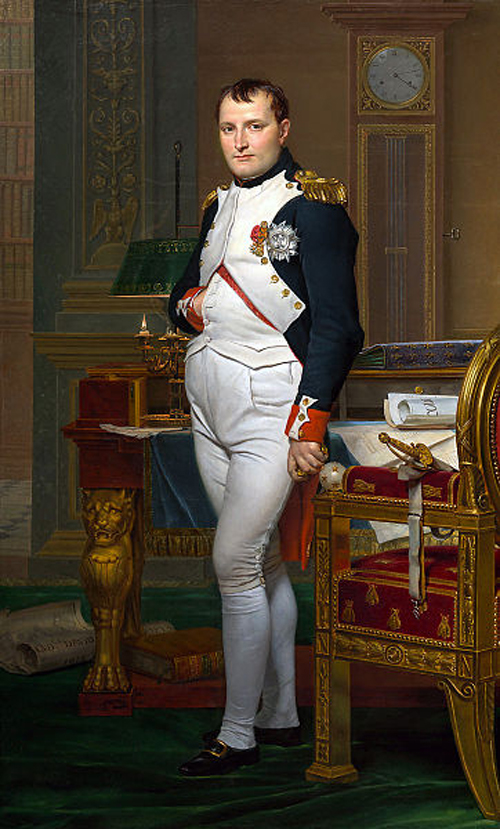By Karen Abbott (W&M Contributor)
In 1821, the year of Napoleon Bonaparte’s death from stomach cancer, his penis embarked on a journey that rivaled its owner’s bloodthirsty trek across Europe. It began on an autopsy table on the British island of St. Helena in the South Atlantic Ocean, which had been the emperor’s home since the ill-fated Battle of Waterloo. In the presence of seventeen men, including various British and French officials, Dr. Francesco Antommarchi removed Napoleon’s liver and stomach and dropped them in jars of ethyl alcohol. It was to the emperor’s detriment that the doctor held a grudge against him; Napoleon had never liked Antommarchi and pointedly left him out of his will.
Shortly after the autopsy, rumors circulated in Paris that the doctor’s aides had smuggled various souvenirs from the island: strips of the bloody bed sheet, teeth, nail clippings, splinters of rib, locks of hair, chunks of bowels. Dr. Antommarchi himself filched the emperor’s death mask and two pieces of lower intestine, which he left with friends in London. Napoleon’s chaplain, Abbé Ange Vignali, laid claim to the most intimate part of the royal anatomy, boasting about his treasure when he went home to Corsica. Two decades later, when the British government allowed Napoleon’s body to be returned to Paris, Vignali’s relatives kept Napoleon’s penis for themselves—at least until 1916, when descendants put the Vignali collection up for auction. The organ was described thusly in the catalogue: “a mummified tendon taken from [Napoleon’s] body during post-mortem.”
An unknown British collector purchased the penis, which had been exposed to the air over the previous century and shrunk considerably. In 1924, eccentric American collector A.S.W. Rosenbach bought it for £400. Home in Philadelphia, he boasted of the relic, used it as a conversation piece for parties, and temporarily loaned it to the Museum of French Art in New York, which displayed it on a small velvet cushion. “Maudlin sympathizers sniffed; shallow women giggled, pointed,” Time magazine reported. “In a glass case they saw something looking like a maltreated strip of buckskin shoelace or a shriveled eel”—a verdict that would give anyone a complex.
In 1969, the Vignali Collection was shipped back to London for auction, but Napoleon’s penis failed to sell. Eight years later, the collection was broken up and auctioned in Paris, where Columbia University professor Dr. John K. Lattimer—America’s leading urologist—bought it for 13,000 francs, about $2900. He had it X-rayed at Columbia Presbyterian Hospital, which confirmed that it is definitely a penis (although French cultural officials remain skeptical of its provenance, and refuse to exhume Napoleon’s body for examination). Lattimer kept his Napoleonic trophy in a suitcase under his bed in Englewood, New Jersey, where it stayed until he died in 2007. His daughter has fielded at least one $100,000 offer and has so far showed it to only one person, author Tony Perrottet, who deemed it “certainly small, shrunken to the size of a baby’s finger, with white shriveled skin and desiccated beige flesh.” Josephine, eat your heart out.
Karen Abbott is the New York Times bestselling author of Sin in the Second City and American Rose. Her next book, a true story of four female Civil War spies, will be published by HarperCollins in 2014.
Sources: Tony Perrottet, Napoleon’s Privates: 2,500 Years of History Unzipped. New York: Harper Entertainment, 2008; Christopher Shay, “Napoleon’s Penis.” Time Magazine, May 10, 2011; Graeme Donald, Loose Cannons: 101 Myths, Mishaps, and Misadventures of Military History. Guilford, CT: Lyons Press, 2009.

